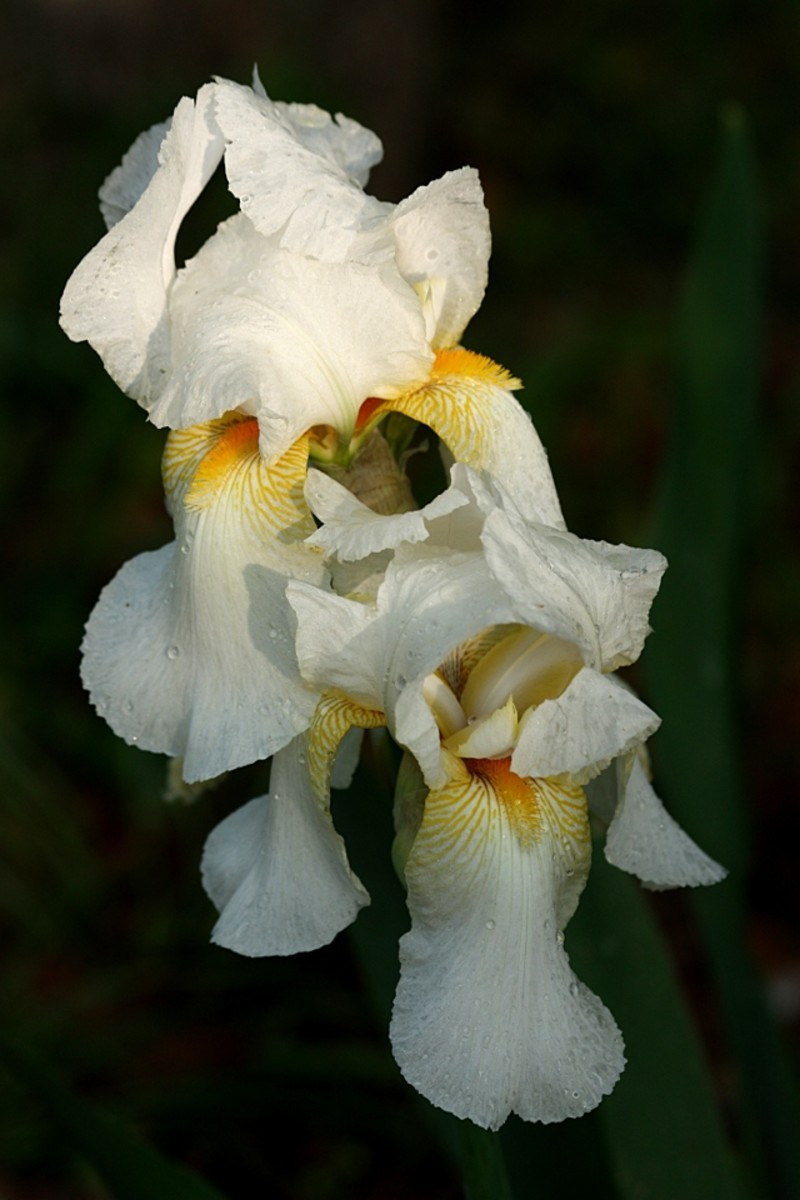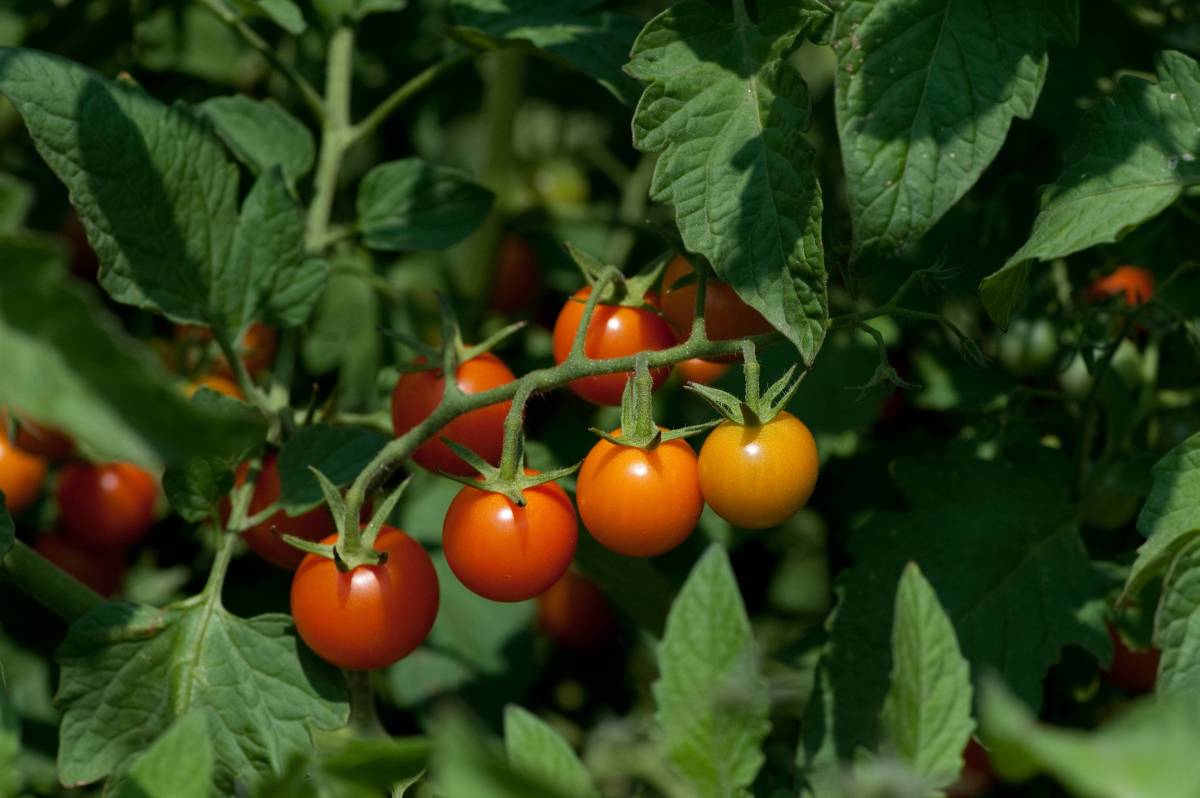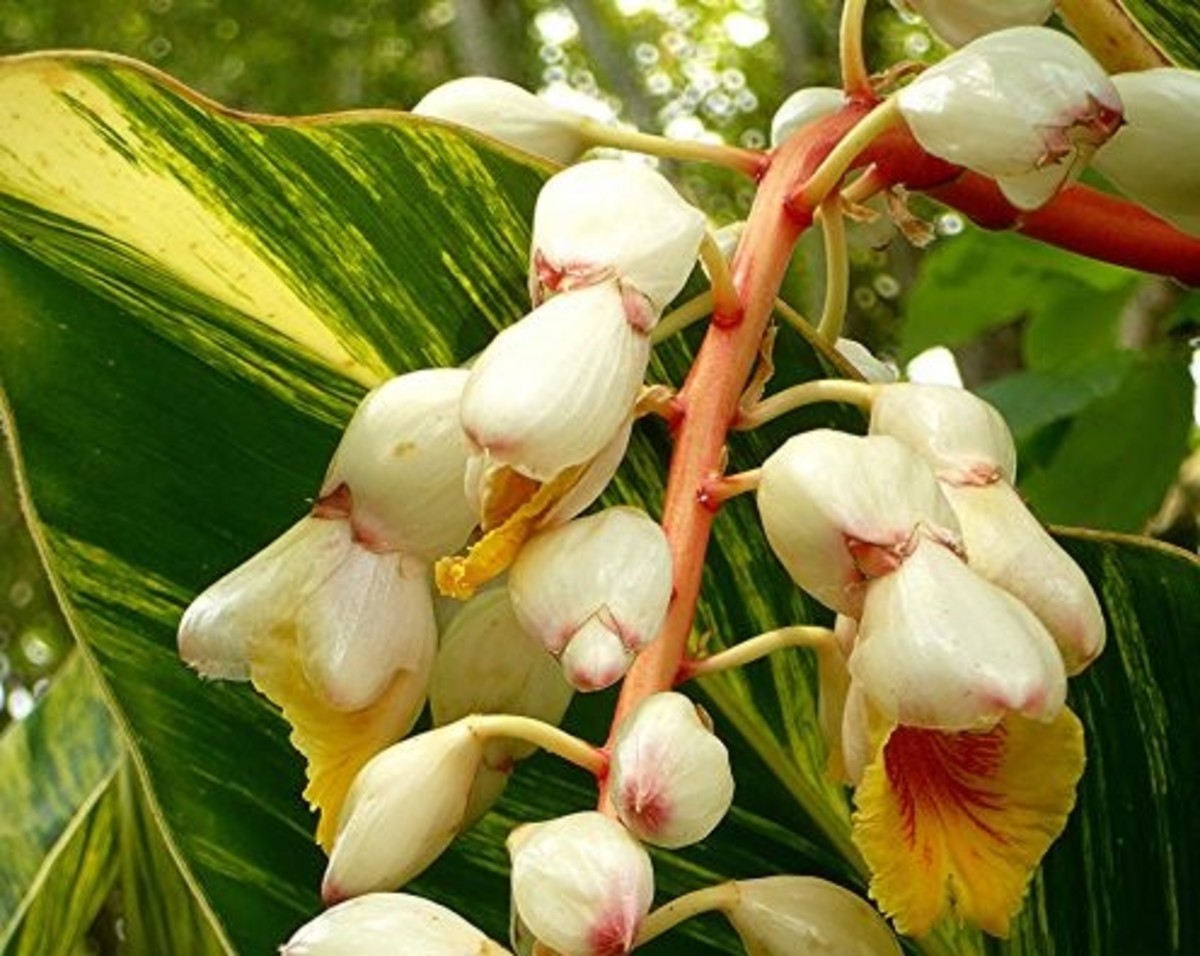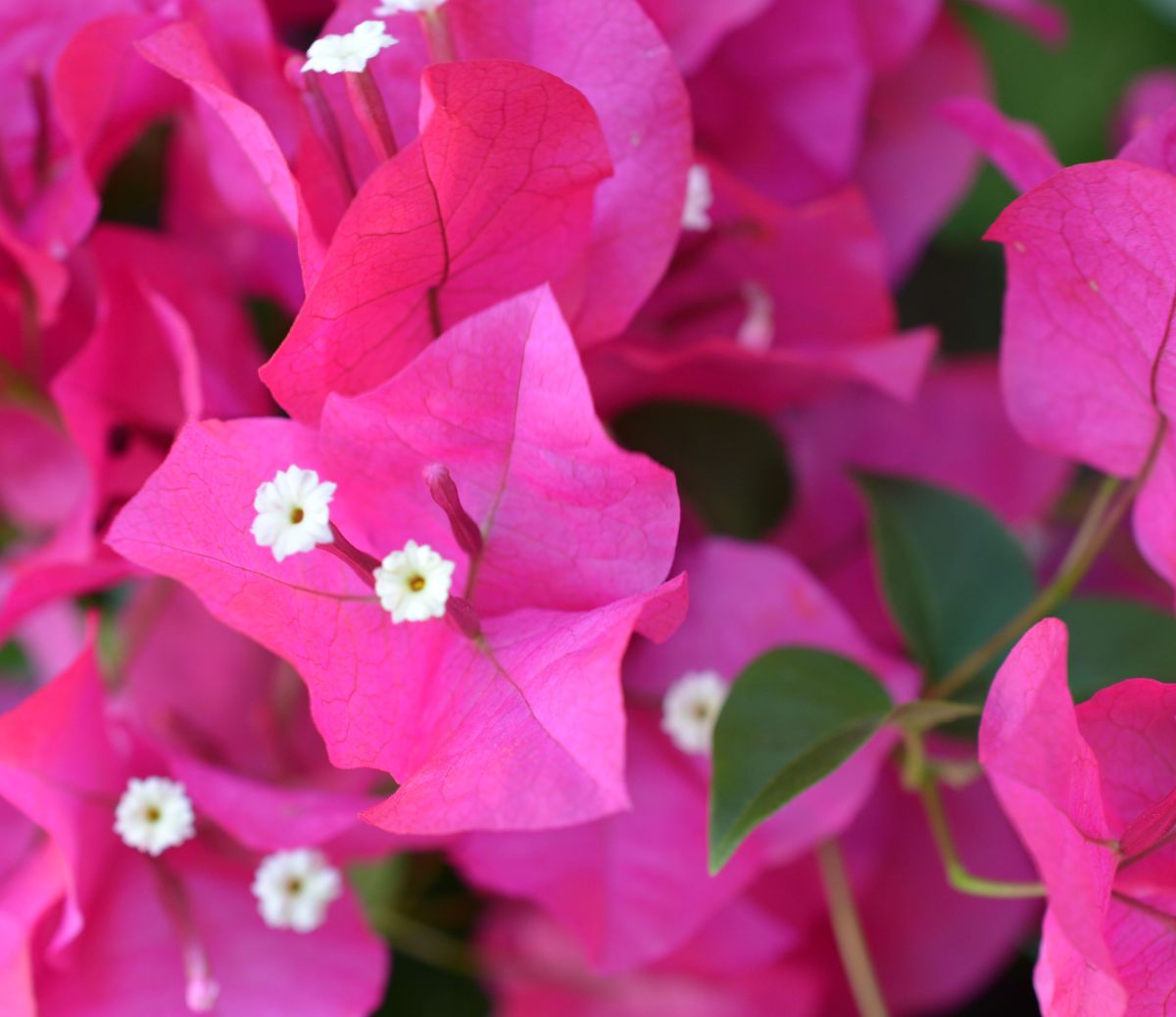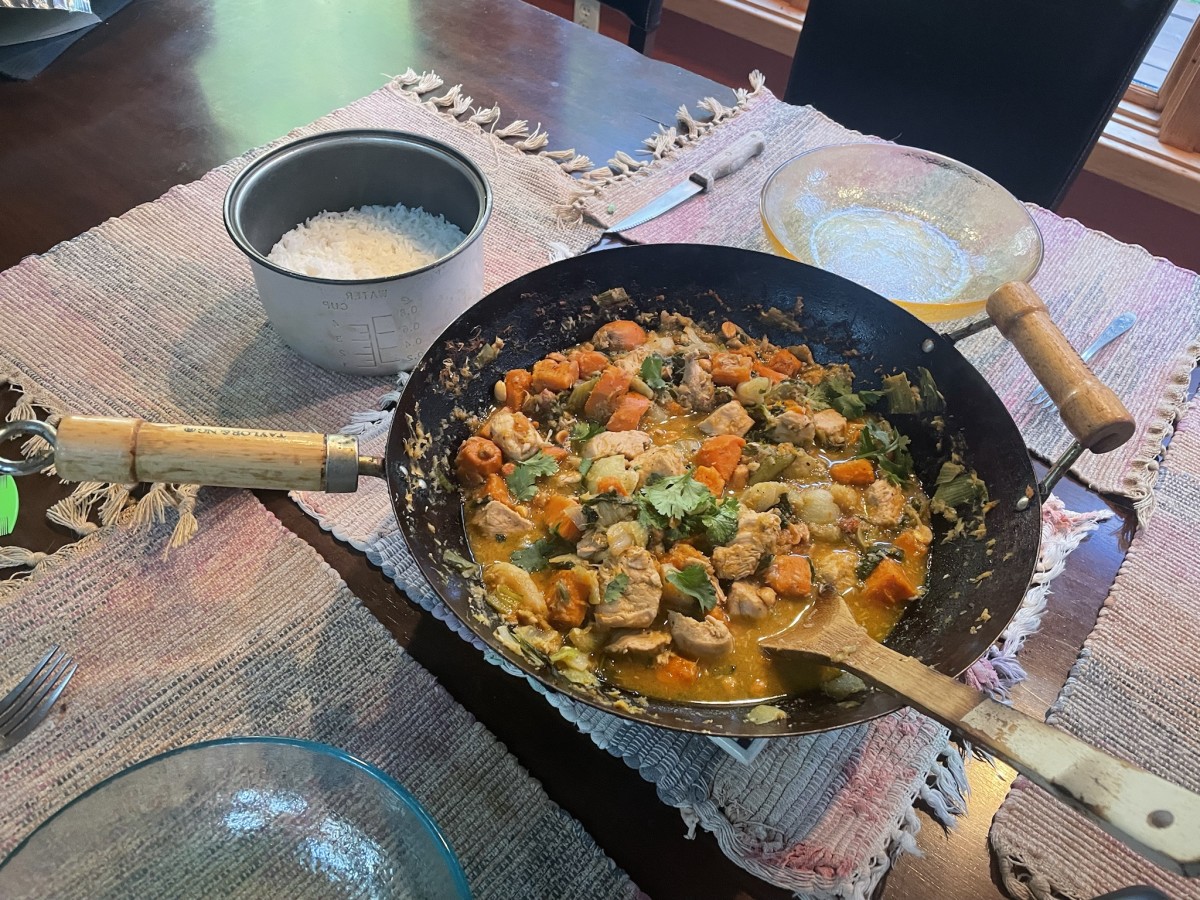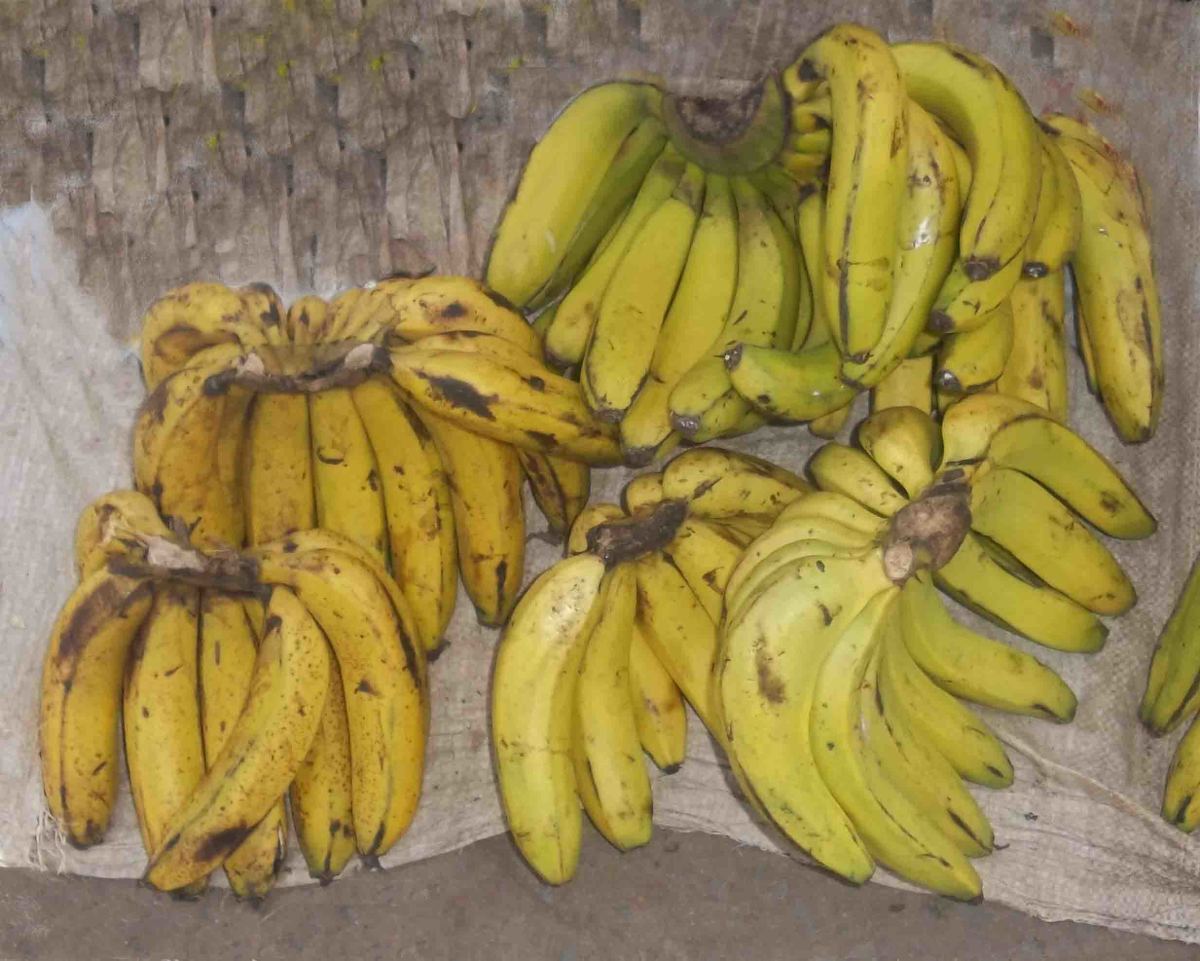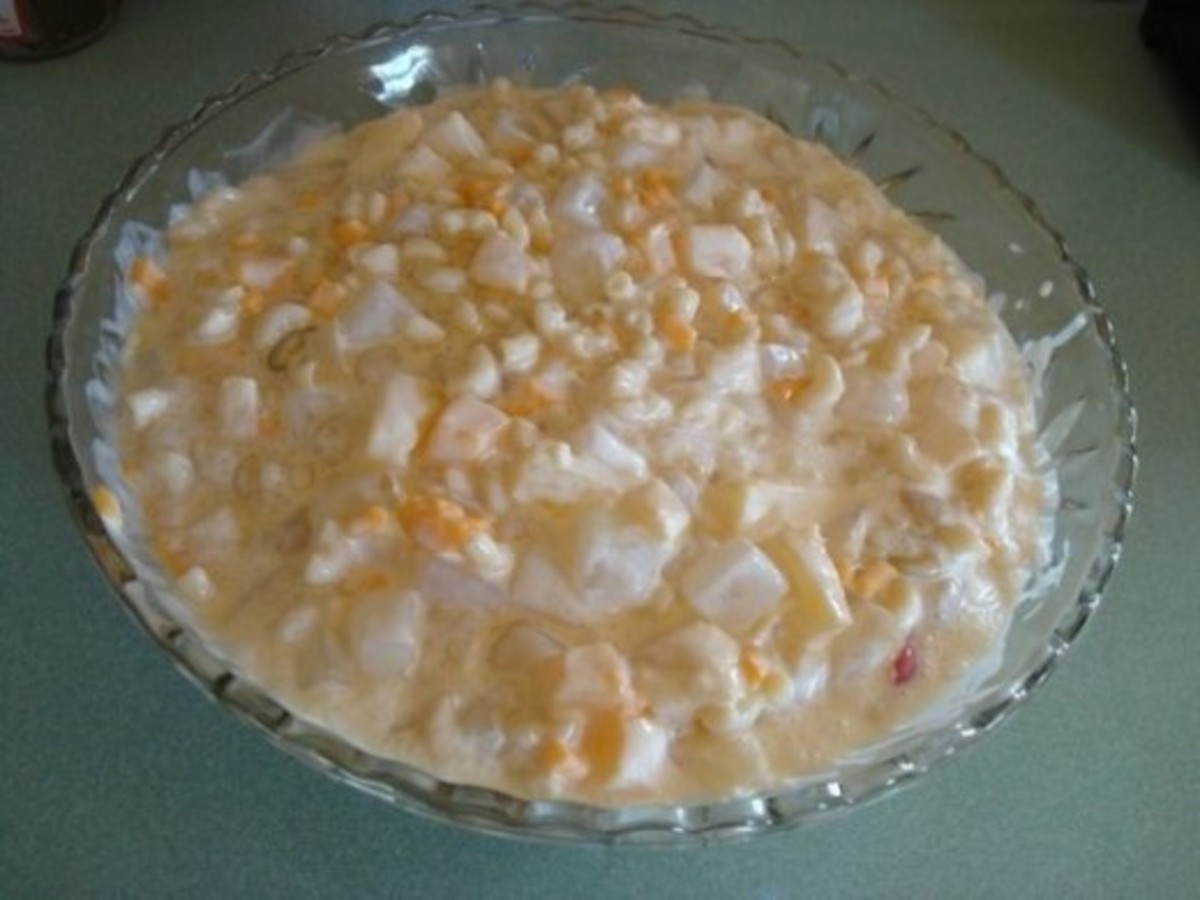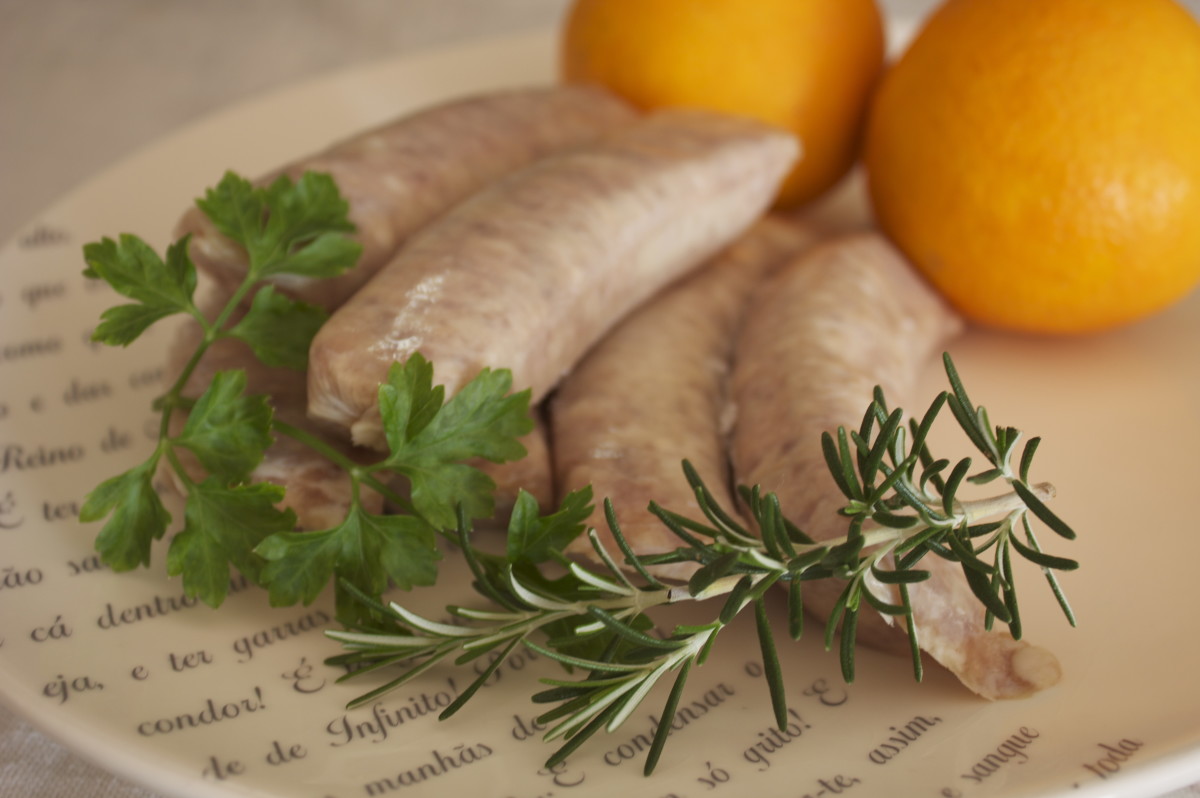Ginger and Lemongrass - A Winning Combination
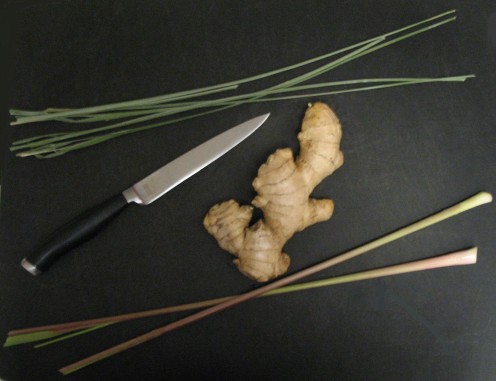
Ginger is a rhizome or "mass of roots" of the plant Zingiber Officinale. It was first cultivated in Asia and is widely used in Asian soups and curry dishes. In the Western world it is predominantly used in cookies, cakes, soda and tea. Fresh ginger has a very strong and pungent taste and has preservative values. Medicinal uses range from treatment of anxiety, nausea and digestive issues and has anti-fungal agents.
Lemongrass originated in India and Tropical Asia and, as with ginger, is very popular in Asian soups and curry dishes, particularly Thai. Lemongrass shares many of the same medicinal, anti-fungal and preservative properties that ginger does, as well as being a natural remedy for menstrual cramps. Lemongrass is used as a natural alternative to chemicals as an insect repellent.
Although the two taste and smell quite different, they compliment each other in a way that make them a great duo for many different uses and recipes.
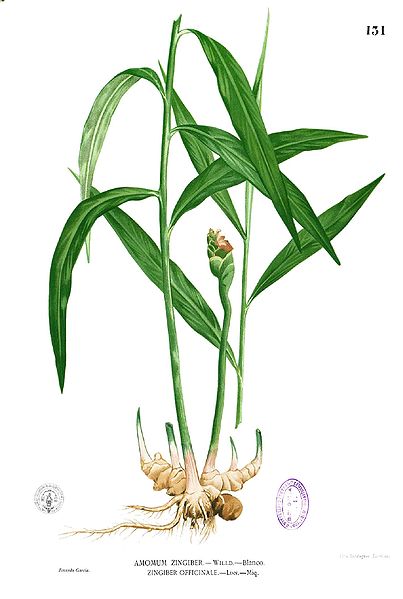
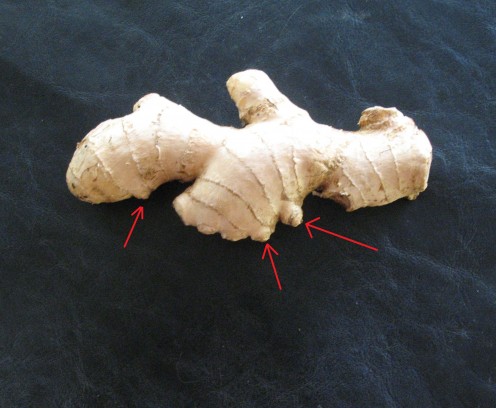
Growing Ginger
Zingiber Officinale is slowly maturing but easy to grow. It is an attractive plant and will look nice in the yard if you live in a warm winter area. If you live in the colder zones it will grow best in a pot or tub as the plant will not mature for at least 10 months to a year.
For the Ginger Rhizome to properly mature you will need the following things:
- Filtered sunlight
- Warmer weather
- Low winds
- Rich soil
- Moisture and Humidity
The best way to start ginger is to get a fresh root from someone else who is growing it. Grocery store Ginger has been treated with a growth retardant. The best time to plant is Late Winter or early spring, shortly after a Full Moon. Soak the rhizome overnight (if you are using store bought ginger this should remove the growth retardants. Cut the ginger into smaller pieces all containing eyes or growth nubs. Simply plant the rhizome, growth nubs up, in rich soil just below the surface. Keep the soil moist at all times but not waterlogged. Start indoors and set out after the temperatures stays above 50 degrees. When temperatures fall below 50 degrees you'll want to bring your plants in. The rhizome is ready for harvest after all the leaves have died off and you've let the soil dry out.
It is recommended that you let the plant die off the first year or two without harvesting. It should grow back every season. To harvest all you have to do is dig it up. Plant some immediately for the next season and use or freeze the rest.
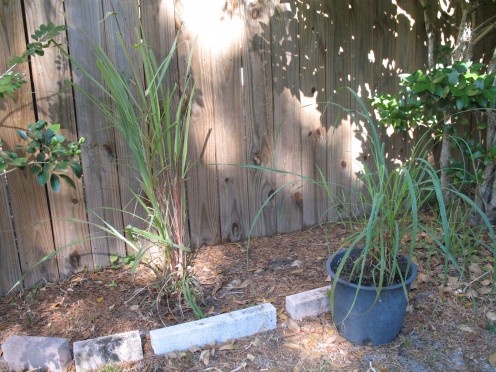
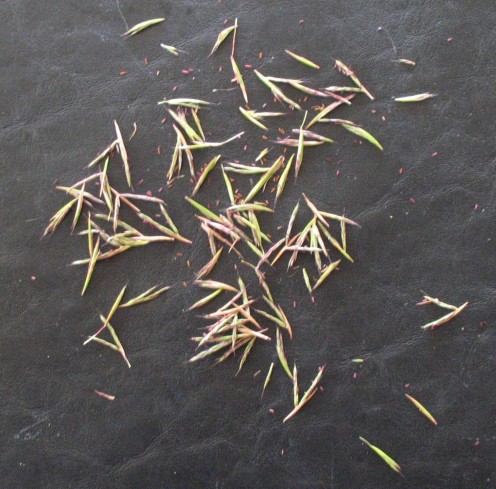
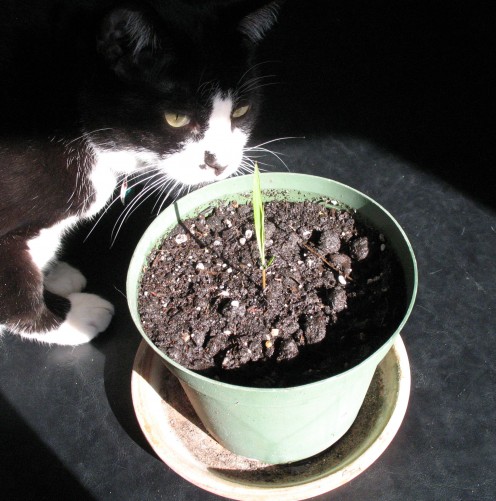
Growing Lemongrass
I started my collection of lemongrass with 4 or 5 small blades in one small pot that I bought from Whole Foods. I re-potted that and when it grew to large for the second pot I carefully re-potted half of that in another pot and the other half in the ground. I now have two areas in the yard and two pots full of continuously growing lemongrass.
As with ginger, lemongrass is a fairly easy plant to grow that requires low maintenance.
The easiest way to start with lemongrass is by buying already established blades and expand from there.
You can also take a few healthy store bought stalks and place in a few inches of water in a sunny window to root. This will take some time, so be patient. Simply plant the newly rooted stalks and they will spread as they grow.
Lemongrass seeds are available for sale online but is the least popular method of growing lemongrass as it takes quite some time. My first Lemongrass crop has gone to seed so I am starting some new plants from scratch as an experiment. Simply plant the seeds under a shallow layer of potting soil, cover with plastic and keep moist until the seedlings sprout.
Lemongrass is a tropical plants and likes a lot of sun and water. I live in Zone 9 and it grows year round outside. Lemongrass does well in a large pot and if you live in a cooler climate it will survive in a sunny spot inside the house during the colder months. It will do better outside so leave it out there whenever possible.
The only pest I've had any trouble with is all three of our cats. Kitties love lemongrass and it is not harmful to them.
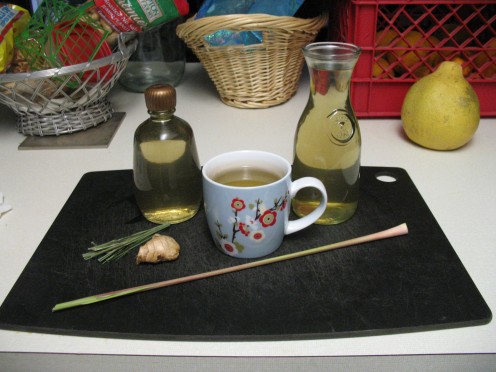
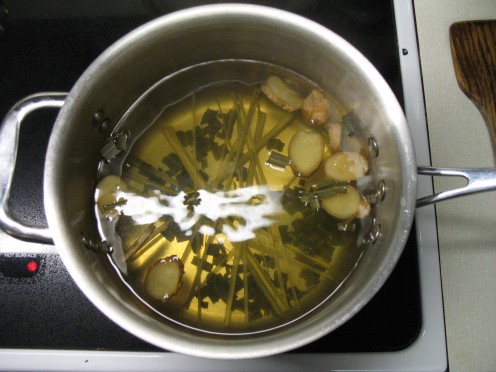
Ginger and Lemongrass Beverages
Ginger is a common ingredient in the craft beer industry. Lemongrass maybe not so much, but I'm willing to try anything once.
Lemongrass would be a nice addition to a homemade Ginger Beer recipe
Ginger and Lemongrass Tea is a simple and soothing mixture. Tea is the only use for the tough lemongrass blade. It is great for an upset stomach, anxiety or nighttime tea.
Fill a pot with water.
Add 2 or 3 inches of chopped ginger.
A lemongrass stalk split down the middle.
A long piece of dried lemongrass blade.
Bring to a boil and cover with lid tilted.
Reduce heat and simmer for 15 to 20 minutes.
Strain off the liquid and enjoy as is or sweeten with honey if desired.
To make a nice Ginger and Lemongrass Infused Simple Syrup boil down equal amounts of the strained tea and sugar into a thickened syrup.
Ginger and Lemongrass infused syrup is a nice addition to teas or alcoholic beverages.

Dragon Berry Ginger Cocktail
Ingredients:
2 oz. Bacardi Dragon Berry Rum
3/4 oz. Ginger and Lemongrass Infused Simple Syrup
1/2 a Lime
Ginger Beer
Lemon Grass Stalk Garnish
Ice
Supplies:
Chilled Highball
Cocktail Shaker
Bottle Opener
Procedure:
Fill the cocktail shaker with ice and pour in the Bacardi Dragon Berry Rum, Ginger and Lemongrass infused simple syrup and the lime juice. Shake vigorously and strain into an ice filled Highball Glass. Top off with Ginger Beer and garnish with a lemongrass stalk.
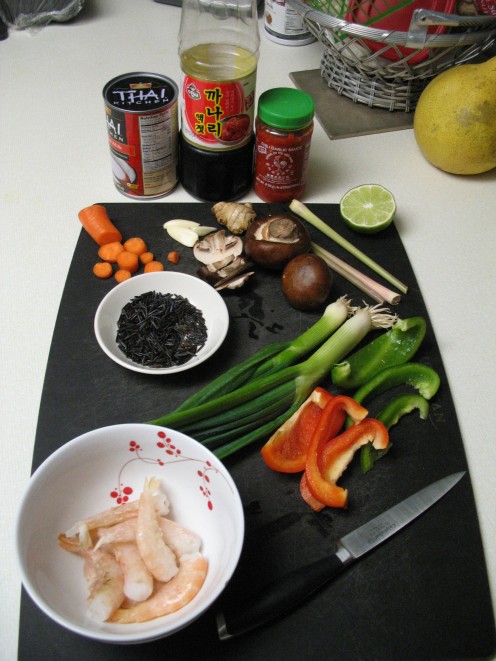
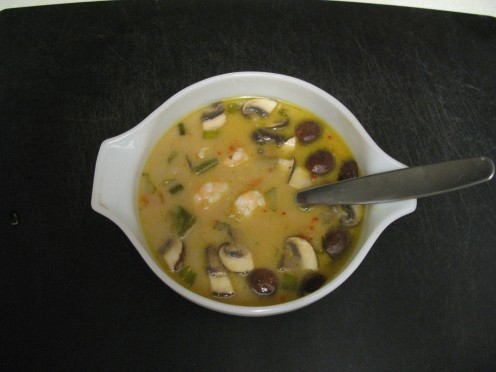
Tom Khaa Goong (shrimp) or Tom Khaa Phak (vegetable) Thai Soup with Wild Rice
Tom Khaa is a comforting Thai soup with a coconut milk broth. Traditionally, galangal is used in Tom Khaa, which is similar to ginger but is not as readily available. This recipe is primarily written for shrimp but is easily worked into a vegan dish by replacing the fish oil with soy sauce and replacing the sauteed shrimp with fried tofu.
Ingredients:
1/4 cup Wild Rice
4 cups Vegetable Broth
1/2 can of unsweetened Coconut Milk
3-4 cloves minced Garlic
1" piece of Galangal or Ginger, chopped and minced
2 Lemongrass stalks, split
3-4 Kaffir Lime Leaves or Zest of Half a Lime
Juice of Half a Lime
1 tbsp of Fish Oil or Soy Sauce
1-2 tsp Chili Garlic Sauce
1-2 cups of Straw, Shitake, Oyster or Baby Bella Mushrooms
2 Green Onions
1/4 cup Carrot
1/2 cup each Red and Green Pepper
16 Medium Shrimp or Prawn or half a package of Tofu
Procedure:
Start the Rice
Set the timer for 45 minutes
Prepare the Broth and add Coconut Milk, Fish or Soy Sauce, Chili Sauce, 2-3 of the minced Garlic cloves, Ginger and Lemongrass, Lime Juice and Kaffir Leaves or Lime Zest, Mushroom, Carrot and Onion.
Bring to a simmer.
With 15 minutes left add the Green and Red Pepper and lightly sauté the Shrimp or Tofu in Olive Oil with the remaining clove of minced Garlic (if using Tofu fry until all sides are golden brown).
When the timer goes off, fish out the Lemongrass stalks and Kaffir Leaves, drain excess water from the Rice and add it to the soup for 5 minutes.
Top off with the cooked Shrimp or Tofu and enjoy.
Related Articles:
- Florida's Invasive Species on the Dinner Plate
What better way to save the environment than by cramming things into your belly? - Kale For Victory!
Fight the evil processed food empire with Kale and this delicious Udon Miso Soup recipe.

